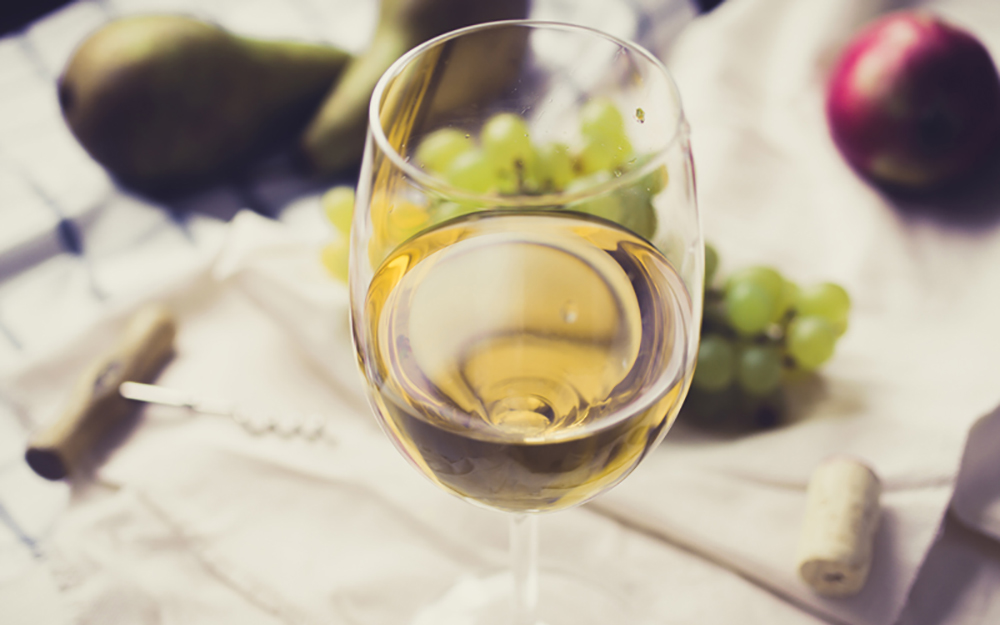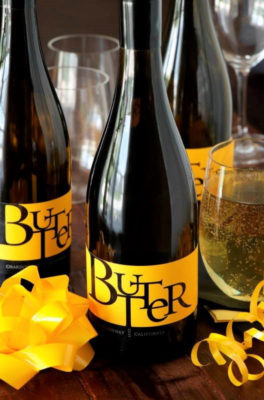
BY Rick Riozza
Whether you like or dislike California Chardonnay (and yes, I hear the angst from the Anything But Chardonnay crowd—to the sensitive clamor of shoppers searching out and buying a boatload load of it at the store), it has to be admitted that the success of this grape and wine is ever-present and is a fact.
And another thing: the Chardonnay flavor profile has ebbed and flowed from fruity to oaky, crisp to buttery, back & forth, and up & down, is now all over the charming Chard map! It’s no longer the pendulum swinging, it’s—hey! Get out of my way! We’re making our wine this way and that! There’s enough room in California and the rest of the world to keep everyone around the wine profile wheel a happy Chardonnay camper.
Chardonnay classically tastes like lemon, apple and pear. It’s not considered an aromatic wine with many characteristics. In a warmer climate like California, you’ll get tropical fruit thrown in—no surprise if you get ripe peach, apricot and mango as well. However a Chard may well have the broadest range of variations of any varietal.
In its original home, France, 1) In Chablis region, the wine is very crisp, stony, with green apples/pears, and chalky—refreshing and tart as can be; 2) in beauteous Burgundy, where famous vineyards and classic wines reign supreme, the perfect taste storm triangle exists: perfectly situated oak, acid and fruit that can go on for miles.
California on the other hand can splendidly serve up a buttery, oaky, rich, fat, fruit cocktail with baked apple on the side! You know who you are! If your mouth just watered reading that last sentence—well, I’ll see you here at the store in a few.
And apparently, it’s about the butter! Just the anticipation of chewing down a rich buttery wine works reveille to a chomping Chard cavalry. Obviously there is no actual butter added; but the winemakers’s process of utilizing different ages and degrees of toasted oak barrels, and, working the process called “malolactic fermentation,” where tart-tasting malic acid converts into softer-tasting lactic acid, churns up the buttery nature in the wine.
If you ever go to a winery when they are crushing Chardonnay grapes, you’ll notice the place smells like a big apple crush, especially in cooler climates. That’s the malic acid you smell. And when the “malo” process begins, Stacy Vogel, head winemaker at the famed Miner Vineyards, poetically observes, “Heavenly aromas surround the winery with not only vibrant orchard smells but complex layers of creamy wafts.
Subjectively, of course, enthusiasts of this lush medium to full-bodied style can differ a bit as to what indeed is the “butter note”. Are we talking the scent of buttered popcorn, vanilla pudding, butterscotch, buttery pie crust, crème brûlée, brioche, or what exact scent butters you up?
Along with the new world wave of winemakers challenging conservative Chardonnay choices, marketers have also joined in the game with the naming of their buttery product. Listed below, I’ve included the names on the labels of factual wine—and, those that are of the “fake news” variety. Can you pick the real ones?
So—how about we start with simply, Butter; or, Buttercream; Cream; La Crema; Cream Tangerine; Buttermelt; Pattymelt; Butternut; Butter Brothers; Butterworld; Butter Pecan; Mack the Butter Knife; Butterfinger; Vanilla Puddin; Buddah-your-face; Churning; Butter Milk; Butter Cream Frosting; Butter Cookies; Imperial Margarine; Butter Imperiale; and finally—wait for it, I Can’t Believe it’s not Butter!
Of the 20 or so listed above—how’d you do? Any Chard fan in town probably knows the veracity of the Butter brand and so many of you buy the stuff by the case. You all enjoy it because it’s like the traditional buttery Rombauer brand—at half the price! And although Total Wines & More offers and sells—rather successfully, the Buttercream, Cream 15, Melt, and Vanilla Puddin among others similarly priced with similar butter-tinged nuances, the Butter brand crowd keeps coming in continually!
The phenomenon is rather interesting: so I analytically checked out our “Buttery Chardonnay Section” (yep!—that’s right!) and guess what I discovered: Most of the buttery-themed Chards check in at around 13 to 14 percent alcohol. On the other hand, Butter checks in at almost 15%! There you go!—Rancho Mirage/Palm Desert is lovingly known for its retiree population (along with their ubiquitous sweet-tooth) that, along with the notion that “liquor is quicker” kinda explains things.
Okay—so I’m not a big sociologist; certainly all ages and types buy the Butter. And when Butter came out bigtime in the market place four years ago or so, at that great $12 to $15 price, it was a total hit; rich, bold and luscious and tasty. Probably a bit more lively vanilla than “butter”, as I recall, but again everyone loved it for the price.
 There may have been a glitch this year: Wine Spectator gave the 2015 Butter Chardonnay 87 points—not bad of course but so many more Chards scored higher. The review stated, “Casts Chardonnay in a pleasing fruit cocktail essence: Pure, moderately rich and persistent, if somewhat cloying on the aftertaste. Drink now- 470,000 cases made.” I’m not sure if “fruit cocktail” is a butter tinged nuance flavor but they sure produced a lot of it and it will probably all be sold by the next vintage.
There may have been a glitch this year: Wine Spectator gave the 2015 Butter Chardonnay 87 points—not bad of course but so many more Chards scored higher. The review stated, “Casts Chardonnay in a pleasing fruit cocktail essence: Pure, moderately rich and persistent, if somewhat cloying on the aftertaste. Drink now- 470,000 cases made.” I’m not sure if “fruit cocktail” is a butter tinged nuance flavor but they sure produced a lot of it and it will probably all be sold by the next vintage.
This summer at Total Wine & More in Palm Desert, I’m often pouring and conversing at the wine bar engaging customers to sample a very nice selection of wines. And we’ll be showcasing many of the buttery wines I’ve listed above for comparison. Come check out the real ones. Cheers!









































